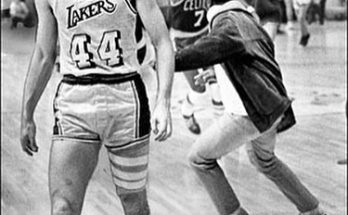LSU’s Mike the Tiger Roars Supreme as College Football’s Most Iconic Mascot, Surpassing Texas’ Bevo and Georgia’s UGA with Unmatched Majesty, Ferocity, and the Spirit of Death Valley
LSU’s Mike the Tiger roars supreme over the college football world, embodying a level of power, elegance, and ferocity that no other mascot can replicate. He is not merely a sideline novelty or a tradition-bound relic; he is a living, breathing symbol of dominance, deeply integrated into the very identity of Louisiana State University and the famed Death Valley. While Texas’s Bevo and Georgia’s Uga have carved their own beloved places in the hearts of fans, they do not command the awe, mystique, or iconic status that Mike does. Mike is not only LSU’s mascot—he’s its guardian spirit, its embodiment of competitive fire, and its ambassador to the world.
Since his first appearance in 1936, when LSU students collectively raised money to purchase a live tiger, Mike has grown into a legend whose presence is unmatched in the sport. Unlike many other mascots that rely on costumes or puppets to represent their teams, Mike is a real tiger—majestic, powerful, and imposing. There is an undeniable difference between watching a costumed character dance on the sidelines and standing in the presence of a full-grown tiger pacing within yards of tens of thousands of screaming fans. The visceral reaction Mike inspires—some mixture of thrill, fear, and awe—is not something that Bevo, a steer, or Uga, a bulldog, can ever match.
Mike’s role goes far beyond showing up for game day photo ops. His habitat on the LSU campus is a destination in and of itself. It is a sprawling, multi-million-dollar facility that mimics his natural environment, complete with a waterfall, stream, and foliage. Students and visitors stop by year-round to see him, creating a 365-day bond between the mascot and the university community. He’s not carted in from a farm or kennel before kickoff and returned to obscurity after the final whistle. Mike lives at LSU. He is part of the rhythm of campus life, and in that way, he symbolizes more than a football program—he represents the pulse of a community.
And then there’s Death Valley. Few venues in college football can match the raw intensity and atmosphere of LSU’s Tiger Stadium, especially on Saturday nights. The chants, the pageantry, the stadium shaking with the energy of over 100,000 fans—it’s a place where legends are made and where the mystique of the tiger takes full form. Mike doesn’t just live next to this temple of sport—he haunts it. His roars, though now less frequent due to changing animal welfare policies, were once considered omens, with every pregame growl seen as a prophecy of touchdowns and triumphs to come. There was a time when Mike’s cage was wheeled right next to the visiting team’s tunnel so they would be forced to walk past him on their way to the field. It was an intimidation tactic straight out of a gladiatorial arena—raw, primal, unforgettable.
Compare that to Bevo, the stoic longhorn who stands quietly in a corner of the field, often unable to appear at certain stadiums due to safety concerns. Or Uga, the sweet English bulldog tucked inside an air-conditioned doghouse, occasionally donning a red sweater and posing for pictures. While both mascots are steeped in tradition and certainly beloved by their fanbases, their impact doesn’t reach beyond their immediate circle. They’re cute, they’re iconic, and they serve their purpose—but they don’t electrify a stadium. They don’t embody danger. They don’t evoke the instinctual awe of the wild.
Mike’s dominance is also reflected in national perception. Surveys and rankings of college mascots consistently place him at the top, and for good reason. When fans across the country think of college football’s most powerful mascots, they think of a tiger, not a steer or a bulldog. There’s something inherently cinematic about Mike. He’s the kind of mascot who could star in a movie and not feel out of place. His story is part sports lore, part wildlife conservation tale, and part southern gothic legend. Mike is both a sports figure and an icon of LSU’s broader identity.
What makes Mike even more compelling is the duality of his nature. On one hand, he represents ferocity, competitiveness, and an almost mythical presence. On the other hand, he is also a symbol of compassion and stewardship. LSU has used Mike’s presence to educate fans and the public about wildlife conservation and the importance of ethical animal care. His habitat is not just a cage—it’s a sanctuary. LSU doesn’t parade him around or exploit him; they protect him and provide a home that mirrors the natural world. This balance between raw power and responsible care only strengthens Mike’s symbolism—he’s not just the apex predator of college football; he’s the apex of what a mascot can and should be.
The rivalry among mascots is not just about who looks the best on T-shirts or who has the most entertaining Twitter account. It’s about representation. It’s about what each mascot says about its school. Uga, lovable and loyal, reflects Georgia’s Southern charm and tradition. Bevo, strong and steady, represents the broad-shouldered pride of Texas. But Mike—the tiger—he reflects a different breed of pride. His presence suggests something more elemental: danger, mystery, grandeur, and a competitive fire that’s impossible to tame.
LSU fans don’t just cheer for Mike—they revere him. He’s part mascot, part myth. For decades, LSU folklore has woven Mike into the narrative of the program’s dominance. Fans speak of his influence as if it were supernatural. His roars, once audible from across the campus, were said to shake the very walls of the stadium. His presence was a challenge to opponents: enter Death Valley at your peril. Even though more recent versions of Mike no longer attend games inside the stadium for ethical reasons, his presence remains felt. He is a constant reminder that LSU does things differently—and boldly.
The impact of a live tiger on campus cannot be overstated. For visiting fans, Mike is a must-see attraction. For players, he’s a symbol of who they play for—a force that embodies strength, resilience, and the unrelenting pressure to perform at the highest level. For alumni, he’s a link to the past, a piece of tradition that never fades. For the university itself, Mike is a visual and emotional anchor. No matter how much college football evolves—through NIL deals, conference realignment, or playoff expansion—Mike stands tall as a timeless figure.
Even in the age of social media and digital branding, where mascots are often reduced to avatars and emoji-friendly figures, Mike remains a physical, living emblem of something deeper. He doesn’t need to dance for the cameras or fire up clever tweets to stay relevant. His relevance is carved into muscle, movement, and the mythos of a roaring tiger whose gaze can silence a crowd. It’s this elemental presence that gives him an edge no other mascot can touch.
There is no denying the affection fans feel for Uga and Bevo. They are part of the lifeblood of their schools and central to many iconic college football moments. But affection is not the same as reverence. And reverence is exactly what Mike the Tiger commands. He doesn’t just accompany LSU into battle—he embodies its feral spirit. He doesn’t just appear on programs and T-shirts—he prowls the imagination of every opponent who’s ever dared to walk into Death Valley.
Mike is more than a mascot. He is a guardian, a legend, a roaring symbol of a university that takes pride not just in victory, but in legacy. No one else in college football wears the crown of iconography with as much majesty and menace. While Uga lounges and Bevo grazes, Mike watches. And when he roars, the entire college football world listens.



